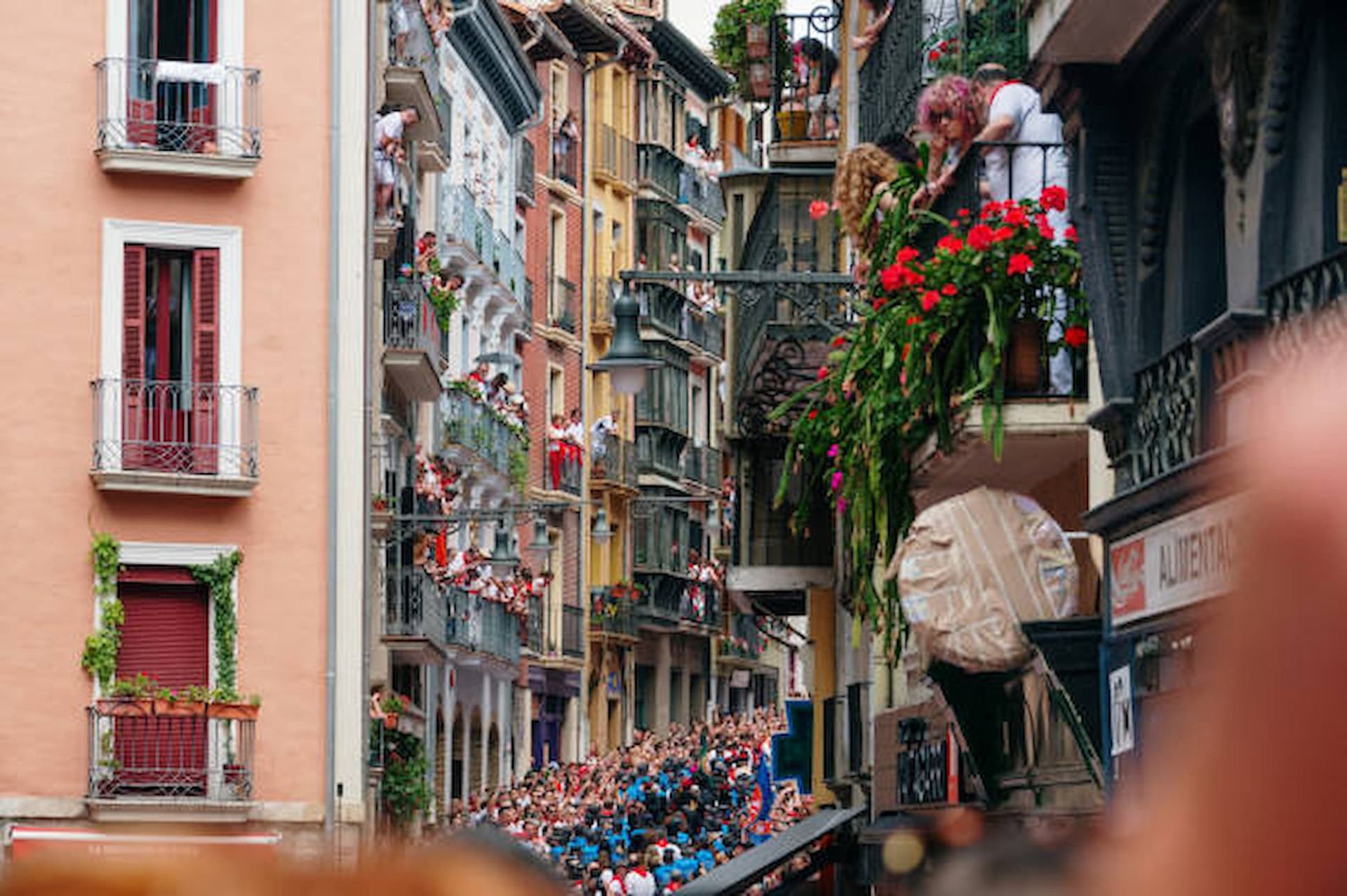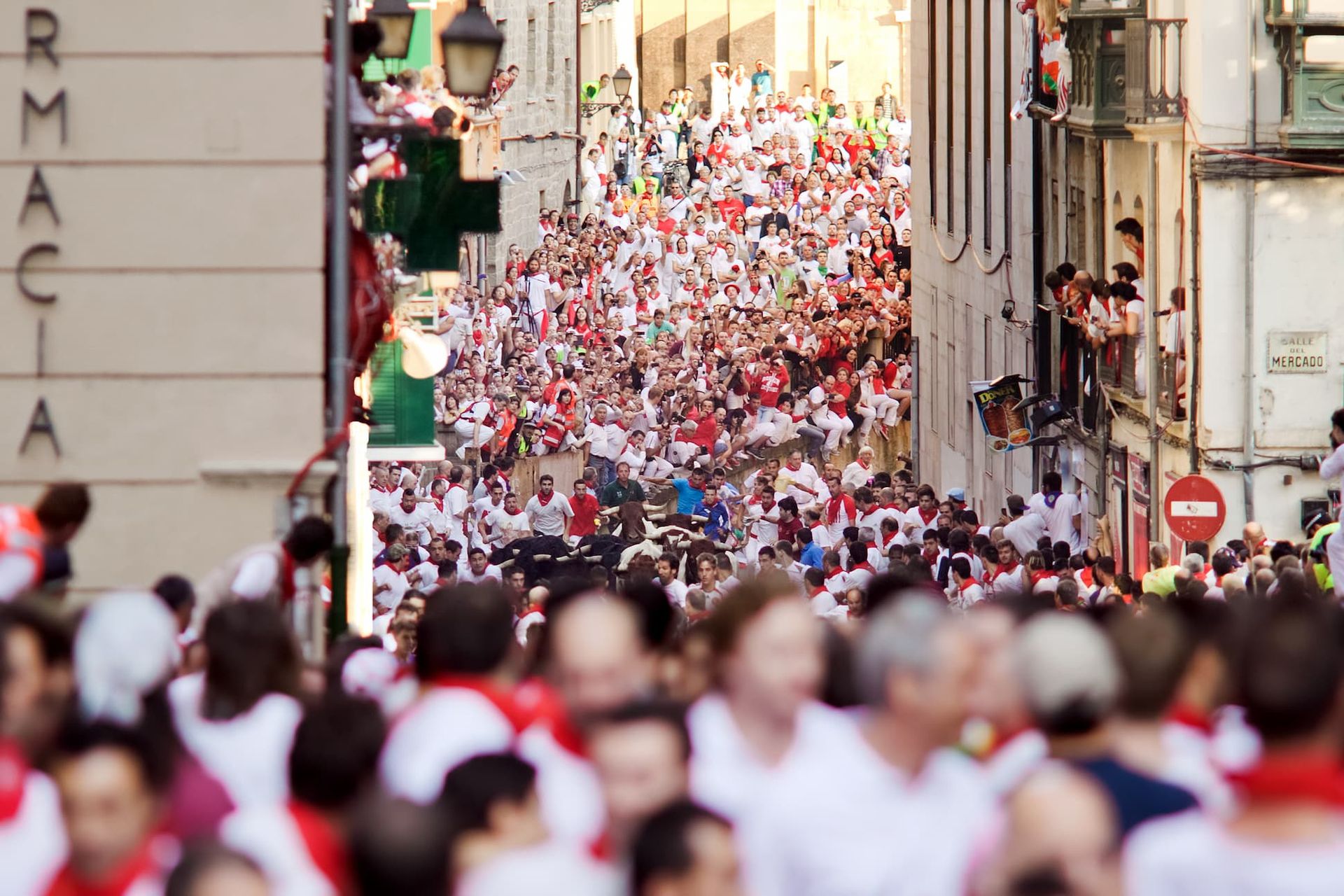
History and Traditions of San Fermín
The San Fermín festivities are closely tied to those traditions that have shaped an internationally renowned event. The program of events each year pays special attention to those happenings that are highly representative from July 6 to July 14 in Pamplona. We invite you to read the complete guide we have published about the festivities. Additionally, we provide added information about the history, traditions, and iconic figures that have left their mark on Pamplona.
Detailed History of the San Fermín Festival
From its origins to the present day, the festivities have been closely associated with the name of the saint to whom the city pays tribute. In essence, although the celebration and the scope of the event have evolved throughout its history, its activities have always been linked to San Fermín. From a historical perspective, the admiration and devotion to the saint in Pamplona are documented as far back as the 12th century through verified data.
The San Fermín poster is one of the most descriptive elements of the celebration visually. There are very ancient designs. The first of them, according to available documentation, dates back to the year 1846. Currently, many artists submit their works to the San Fermín Poster Contest. Creativity and art are also showcased every night in the city sky, as demonstrated by the International Fireworks Competition. The fireworks take place at 11:00 p.m.
The Comparsa de Gigantes y Cabezudos (Troupe of Giants and Big Heads), accompanied by a family audience, parades through the streets of the city every morning, led by the sound of bagpipers. Undoubtedly, music is a constant in every corner. For example, Plaza de la Cruz becomes the stage for band concerts every noon.
Iconic Traditions of San Fermín
The “chupinazo,” held in the Town Hall square, is one of the key moments in the festivities. In fact, it is broadcast live on television. It is a moment that symbolizes the beginning of a celebration that unfolds continuously for nine days, approaching its final stretch with another traditional act: the “Pobre de mí” (symbolizing the farewell).
The name of the event is integrated into the lyrics of the song that those present sing loudly while removing the traditional red scarf from their necks. On July 7, the San Fermín Procession takes place, starting from the Church of San Lorenzo and traversing other mythical streets of the old town. The route is filled with very special moments, and one of the most anticipated is the singing of the Jota to San Fermín.
On the other hand, the running of the bulls starts from July 7. It is characterized by speed, risk, and intensity. Many professional runners consciously prepare to face new challenges each year. It is worth noting that participants come from different parts of the world. One of the most challenging points of the race is the famous “Curva de Estafeta.” Another tradition of the festivities has a gastronomic touch and is repeated every day after the running of the bulls. Many people enjoy a delicious chocolate with churros.
The most emblematic events of San Fermín have not only established these festivities with international significance. The traditions of the celebration also connect with popular culture and are a theme present in cinema and literature. Undoubtedly, the red scarf is one of the most characteristic symbols of these festivities. Likewise, some locations in the city, such as Plaza del Castillo, gain notable visibility.
Historical Figures of San Fermín
Ernest Hemingway is one of the names directly linked to the festival. Anyone visiting the city at any time of the year can also enjoy a pleasant cultural walk: the Hemingway Route focuses on specific points such as Hotel La Perla or Café Iruña. His novel “Fiesta” is set in the capital of Navarre.
On the other hand, the musician Pablo Sarasate made room in his busy schedule to be in Pamplona during the San Fermín festivities. In our Complete Guide to San Fermín in Pamplona, we present a varied selection of accommodations. If you want to know more about the life and professional career of this important violinist, visit the Pablo Sarasate Museum located in the Palacio del Condestable (on Calle Mayor). Many names have integrated into the history of the festivities at some point. Orson Welles is another example.
Furthermore, there is also the participation of beloved individuals who have had the honor of launching the “chupinazo.” Juan Carlos Unzué experienced a very emotional moment in 2022 when the rhythm of the festival returned to Pamplona after a two-year pause (due to the context and circumstances of the coronavirus pandemic). In his words, he had a beautiful tribute to the work done by healthcare professionals.

